Do you have a question about the Sony Ericsson Cyber-shot C905 and is the answer not in the manual?
Information about the CDS-75 desk stand for charging and file transfer.
Details on the IPK-100 camera phone kit including case, tripod, and belt clip.
Information on the ITC-60 TV-out cable for sharing images on a big screen.
Instructions for inserting the SIM card and the battery into the phone.
Steps to power on the phone, including PIN entry and initial setup.
Details about the SIM card and its role in phone operation and subscription.
Information on Personal Identification Number (PIN) for phone security and activation.
Resources and methods for obtaining assistance and information about the phone.
Instructions and steps for charging the phone's battery.
Details on front-facing keys, screen, speaker, and connectors.
Identification of back and side components like camera, flash, and strap holder.
Access to ringtones, games, music, themes, and wallpapers via the PlayNow service.
Features related to the phone's camera and photo capabilities.
Access to GPS features like Google Maps, navigation, and tracking.
Managing phone numbers, personal details, and groups of contacts.
Features related to making, receiving, and managing phone calls.
Accessing the internet, browsing web pages, and using internet services.
Sending and receiving text, picture, and voice messages.
Managing photos, music, and video files on the phone.
Tools for managing appointments, tasks, notes, and alarms.
Using the phone as a radio receiver and managing channels.
Configuration options for phone features, network, and display.
Customizing ringtones, volumes, and notification alerts.
Customizing the arrangement and display of icons in the main menu.
Managing wireless connections like Wi-Fi, Bluetooth, and USB.
Steps for moving through the phone's menu system using navigation keys.
How to select actions and options using the phone's screen keys.
Accessing context-specific options for items within menus.
How to exit or close an active function or application.
Method to return the phone to its idle or standby state.
How to browse and manage media files like photos and music.
Explanation of how tabs are used within certain menu sections.
Using keypad shortcuts for quick access to phone functions.
How to activate phone functions directly using navigation key shortcuts.
Customizing or changing existing navigation key shortcuts.
Details about inserting, using, and managing memory cards for storage.
Step-by-step guide for inserting a memory card into the phone.
Instructions for safely removing a memory card from the phone.
How to select and change the language displayed on the phone.
Steps to modify the phone's display language settings.
How to switch between different text input methods on the phone.
Changing text case between uppercase and lowercase letters.
Method for entering numerical digits using the phone keypad.
How to input punctuation marks like periods and commas.
Steps to insert special characters and symbols into text.
Guide to using the T9 text input method for efficient typing.
Instructions for using the multitap input method for text entry.
Adding custom words to the phone's built-in dictionary.
Instructions on operating the camera for taking photos and recording videos.
Step-by-step guide for capturing still images using the camera.
Instructions for recording video clips with the phone's camera.
How to adjust zoom levels while using the camera.
Adjusting the camera's brightness settings for optimal shots.
How to access and review captured photos and video clips.
Exploring advanced settings and capabilities of the phone's camera.
Using Smile Shutter to automatically capture photos when smiles are detected.
Utilizing BestPic to capture multiple shots and select the best one.
How to view photos on a TV and tag them for organization.
Categorizing photos by creating and applying custom tags.
Ways to use saved photos for contacts, startup, or wallpaper.
Setting a Java application as a custom phone wallpaper.
Using PhotoDJ and VideoDJ for editing photos and video clips.
Editing and saving a photo using the PhotoDJ software.
Editing and saving a video clip using the VideoDJ software.
How to trim and edit the length of video clips.
Steps to upload photos to an existing blog service.
Sending recently taken photos or videos directly to a blog.
Uploading video clips to an existing blog.
Sending video clips to the Blogger platform.
Accessing blog addresses saved within phone contacts.
Using File Manager to organize and manage files saved on the phone.
Checking the available storage space on the phone and memory card.
How to mark multiple items within a folder for management.
Moving files between the phone's internal memory and the memory card.
Accessing details and properties of files stored on the phone.
Methods for sending files and data to other phones wirelessly.
Using PC software to transfer data between phone and computer.
List of operating systems compatible with the transfer software.
Instructions for installing the Sony Ericsson Media Manager software.
Important notes and requirements before connecting the phone via USB.
Procedure for safely unplugging the USB cable from the phone and PC.
Using drag and drop functionality for file transfer.
Connecting the phone to a computer using a USB cable for various functions.
Transferring files between phone and computer using USB drag and drop.
Prerequisites and preparation for using Bluetooth on the phone.
Activating the Bluetooth feature on the phone.
Connecting the phone to other Bluetooth devices.
Managing connection permissions for Bluetooth devices.
Initial pairing process for a Bluetooth handsfree device.
Using power saving modes to conserve battery life.
Sending and receiving audio via Bluetooth handsfree.
Creating a backup of phone data using the PC Suite software.
Restoring phone data from a backup using the PC Suite software.
Creating a backup of phone data using Media Manager.
Restoring phone data from a backup using Media Manager.
Steps for initiating and answering phone calls.
Redialing the last dialed number or a number from the call list.
How to accept an incoming phone call.
How to decline or reject an incoming phone call.
Adjusting the speaker volume during an active call.
Temporarily disabling the microphone during a call.
Activating the loudspeaker function for hands-free calls.
Accessing the list of missed calls from standby mode.
Information about network selection and switching between GSM/3G.
Making emergency calls, including important numbers and procedures.
Making and receiving video calls with friends and family.
Viewing and calling numbers from the recent calls list.
Managing and storing contact information like names and numbers.
Choosing which contact list (phone or SIM) to display by default.
Storing contact details in the phone's internal memory.
Steps to add a new contact with name and number.
Initiating calls directly from the saved contacts list.
How to make a call to a saved contact.
Quickly accessing the main contacts list.
Using Smart search to quickly find and call contacts.
Enabling or disabling the Smart search feature for contacts.
Modifying existing contact information, adding or changing details.
Adding extra details like notes or addresses to a contact.
Managing contacts stored on the SIM card.
Adding new contact details directly to the SIM card.
Removing contacts from the phone or SIM card.
Checking the available memory for storing contacts.
Viewing the current status of contact memory usage.
Setting up and using speed dial for quick calling of frequent contacts.
Assigning phone numbers to speed dial positions for quick access.
Making calls using the speed dial feature.
Creating and managing groups of contacts for messaging or calls.
Steps to create a contact group for sending messages.
Advanced options and features related to phone calls.
Accessing and managing voicemail messages.
Entering the phone number for accessing voicemail services.
How to access and listen to voicemail messages.
Using voice commands for phone operations like dialing and answering.
Creating custom voice commands for dialing specific contacts.
Making calls using pre-recorded voice commands.
Setting up call forwarding to send calls to another number.
Enabling the call waiting feature to be notified of incoming calls.
Making a second call while an existing call is on hold.
Accepting a second incoming call while on an active call.
Declining a second incoming call.
Ending the current call to answer a new incoming call.
Managing multiple active calls and calls on hold simultaneously.
Switching between active calls and calls on hold.
Merging two separate calls into a conference call.
Transferring a call to another number.
Ending the current call and returning to a held call.
Setting up and managing conference calls with multiple participants.
Adding another person to an ongoing conference call.
Removing a participant from a conference call.
Engaging in a private conversation with one participant during a conference call.
Managing your own phone numbers and contact entries.
Viewing the list of your saved phone numbers.
Configuring the phone to accept calls only from specific contacts.
Adding contacts to a list for accepted incoming calls.
Setting the phone to accept calls from any number.
Setting up restrictions for outgoing or incoming calls.
Available options for restricting calls, such as outgoing or incoming.
Steps to activate call restriction features.
Monitoring call duration, costs, and usage times.
Checking the duration of calls, last call, and total call time.
Controlling whether your phone number is displayed to recipients.
Steps to prevent your phone number from being displayed during calls.
Features and usage of text and picture messaging.
Instructions for composing and sending messages from the phone.
Step-by-step guide for writing and sending a message.
Using copy and paste functions within messages.
How to receive, view, and save incoming messages.
Saving messages to the phone's memory card for storage.
Saving messages to the SIM card.
Accessing and reading messages from the phone's inbox.
Creating and using message templates for frequently sent phrases.
Creating new message templates with custom text and items.
Saving an existing message as a reusable template.
Configuring settings for message alerts, delivery, and storage.
Setting default options that apply to all outgoing messages.
Customizing options for individual messages before sending.
Sending and receiving voice recordings as messages.
Recording and sending a voice message to contacts.
Sending, receiving, and managing email accounts and messages.
Preparation and setup required for using email on the phone.
Setting up a new email account on the phone.
Composing and sending email messages, including attachments.
Checking for new emails and reading received messages.
Saving received email messages for later access.
Replying to received email messages.
Connecting and communicating via instant messaging services.
Setup requirements for using instant messaging.
Configuring server details for instant messaging.
Accessing the instant messaging service.
Exiting the instant messaging service.
Adding contacts to your instant messaging list.
Creating and managing chat groups for group conversations.
Steps to start a new chat group with contacts.
Adding an existing chat group to your list.
Saving chat message history for later review.
Using the included stereo handsfree accessory with the phone.
Connecting and using the handsfree accessory for music and calls.
Controls and features for playing music files on the phone.
Starting music playback using the music player.
Pausing or stopping music playback.
Fast forwarding or rewinding through music tracks.
Navigating between different music tracks.
Adjusting the music playback volume.
Minimizing the music player to continue background playback.
Accessing the music player interface again.
Creating and managing custom playlists for music organization.
Creating new playlists to organize music tracks.
Adding existing music tracks to a playlist.
Listening to audio books transferred to the phone.
Information on purchasing music tracks through online services.
Using TrackID to identify music tracks by title, artist, or album.
Steps to use TrackID to identify music playing nearby.
Streaming music and video clips from the internet.
Choosing a data account for streaming online content.
Instructions for playing video files using the player.
Stopping or pausing video playback.
Steps to tune into and listen to radio stations.
Automatically scanning for available radio channels.
Manually tuning to specific radio frequencies.
Adjusting the radio volume.
Minimizing the radio to continue listening in the background.
Accessing the radio interface again.
Saving preferred radio channels for quick access.
Steps to save a currently tuned radio channel.
Accessing previously saved radio channels.
Navigating between saved radio channels.
Recording audio snippets or memos.
Recording an ongoing phone conversation.
Playing back recorded sounds or calls.
Initiating an internet browsing session.
Closing the internet browser application.
Creating and managing quick links to favorite web pages.
Adding a new website address to the bookmarks list.
Accessing a saved bookmark to visit a website.
Viewing a list of previously visited web pages.
Accessing the browsing history of visited web pages.
Advanced functions for web browsing, including pan, zoom, and saving.
Adjusting the view of web pages using pan and zoom.
Initiating a phone call while browsing the internet.
Saving images from web pages to the phone.
Searching for specific text within a web page.
Sharing a web page link via message or other methods.
Using keypad shortcuts for quick browser navigation.
Configuring keypad shortcuts for internet browser functions.
Managing security certificates for secure internet browsing.
Viewing installed security certificates on the phone.
Subscribing to and downloading updated content like news and podcasts.
Adding new web feeds to follow updates.
Finding and adding new web feeds.
Downloading content such as podcasts or photos from web feeds.
Manually updating or scheduling updates for web feeds.
Setting up automatic updates for web feeds.
Displaying web feed updates on the standby screen.
Configuring web feeds to appear on the standby screen.
Accessing web feed headlines from standby mode.
Subscribing to and downloading audio and video podcasts.
Accessing downloaded audio podcasts.
Accessing downloaded video podcasts.
Subscribing to and downloading photos from photo feeds.
Accessing photos from subscribed photo feeds.
Watching and uploading video clips using the YouTube application.
Opening and using the YouTube application on the phone.
Connecting to the internet wirelessly using Wi-Fi networks.
Steps for searching, connecting, and browsing the internet via Wi-Fi.
Enabling the Wi-Fi function on the phone.
Connecting the phone to an available Wi-Fi network.
Initiating internet browsing after connecting to Wi-Fi.
Using DLNA to share media with other home network devices.
Enabling the DLNA server function on the phone.
Instructions for acquiring a GPS location fix.
Understanding and configuring assisted GPS for faster location.
Choosing whether to use assisted start for GPS.
Using Google Maps for navigation, location search, and route planning.
Using Wayfinder Navigator for turn-by-turn voice-guided directions.
Launching the Wayfinder Navigator application.
Additional GPS functions like saving locations and accessing favorites.
Saving current or favorite locations for later reference.
Saving the current GPS position as a favorite location.
Displaying saved locations on the map interface.
Accessing saved favorite locations within Google Maps.
How external services may request access to your location.
Managing privacy settings for external services accessing GPS data.
Manually disabling the GPS receiver to save battery.
Steps to manually enable or disable GPS functionality.
Using the GPS-based sports tracking application.
Initiating a new training session in the Tracker application.
Comparing training session results and routes.
Manually stopping an ongoing training session.
Viewing and analyzing the outcomes of training sessions.
Syncing phone data with a computer via USB or Bluetooth.
Instructions for installing the necessary PC Suite software.
Performing synchronization with PC Suite software.
Syncing phone data with online services via SyncML or Exchange.
Using Flight mode to disable wireless transmissions for sensitive environments.
Enabling the menu to choose flight mode settings.
Choosing between Normal and Flight modes.
Updating the phone's software and firmware.
Checking the current version of the phone's software.
Updating phone software over the air.
Configuring settings for phone software updates.
Steps to perform software updates directly on the phone.
Updating phone software via a connected computer.
Setting and managing alarms, including recurring alarms and signals.
Setting a new alarm with a specific time.
Configuring alarms to repeat on specific days.
Choosing the sound or signal for an alarm.
Silencing an active alarm.
Disabling an active alarm.
Removing a set alarm.
Configuring alarm behavior when the phone is in silent mode.
Setting alarms to ring or remain silent in silent mode.
Managing appointments, reminders, and synchronizing with computer calendars.
Adding, viewing, and editing calendar appointments.
Creating a new appointment entry in the calendar.
Accessing details of a specific calendar appointment.
Modifying existing calendar appointments.
Configuring reminder settings for calendar appointments.
Creating, saving, and displaying notes on the phone.
Adding, managing, and setting reminders for tasks.
Creating a new task entry.
Setting reminder notifications for tasks.
Customizing phone settings for different environments or situations.
Choosing and activating a predefined profile.
Accessing and modifying profile settings.
Adjusting the phone's clock to the correct time.
Setting the current date on the phone.
Configuring the phone's time zone settings.
Selecting a ringtone for incoming calls.
Adjusting the volume level for ringtones.
Disabling the ringtone for incoming calls.
Changing screen orientation for media applications.
Changing screen orientation for internet browsing.
Launching a game from the games menu.
Exiting a game application.
Choosing and launching a Java application.
Configuring permissions for Java applications.
Understanding and using the SIM card lock feature.
Changing the PIN code for SIM card protection.
Activating and managing the SIM card lock.
Setting a phone lock code to prevent unauthorized use.
Activating and using the phone lock feature.
Unlocking the phone using the correct lock code.
Modifying the existing phone lock code.
Preventing accidental dialing by locking the keypad.
Configuring the phone to automatically lock the keypad.
Manually unlocking the phone's keypad.
Information about the phone's International Mobile Equipment Identity number.
Finding the phone's IMEI number.
Frequently asked questions and their solutions for phone issues.
Performing a factory reset to restore phone settings.
Steps to perform a master reset on the phone.
Troubleshooting low battery or charging issues.
Resolving issues where the battery icon does not appear.
Understanding why menu options may be grayed out.
Troubleshooting internet connectivity and data service issues.
Downloading necessary settings via the setup wizard.
Resolving problems with sending text or picture messages.
Entering the service center number for message sending.
Configuring MMS profiles for picture messaging.
Setting the message server address for picture messages.
Troubleshooting issues with ringtone volume or silence.
Resolving Bluetooth detection and connectivity problems.
Troubleshooting USB synchronization and transfer errors.
Procedure for resetting a forgotten code memo passcode.
Steps to reset the code memo and its entries.
Troubleshooting 'Insert SIM' error messages.
Ensuring the correct SIM card is inserted for operation.
Resolving errors from incorrect PIN or PIN2 entry.
Unblocking the SIM card after multiple incorrect PIN attempts.
Troubleshooting mismatches when changing security codes.
Resolving issues related to network signal or coverage.
Troubleshooting PUK blocked errors and contacting the provider.
Accessing online support, software updates, and tips.
Information on warranty, service partners, and contact details.
Safe handling, operating conditions, and maintenance advice.
Precautions for using the phone near medical devices.
Safety considerations and regulations for using phones while driving.
Information on GPS accuracy and usage limitations.
Safety warnings regarding children's use of the phone and accessories.
Safe usage instructions for the phone charger.
Information on battery charging, usage, and care.
Proper use of the phone's antenna and potential effects on performance.
Information on RF energy exposure and SAR guidelines.
Understanding and protecting against malicious software.
Recommendations for using genuine Sony Ericsson accessories.
Information for users with special needs, including TTY compatibility.
Proper recycling of electronic equipment and batteries.
Guidelines for safely disposing of phone batteries.
Important precautions for using and handling memory cards.
Steps to erase personal data before disposing of the product.
Warning about avoiding high volume levels to protect hearing.
Terms and conditions for using the device's software.
Sony Ericsson's warranty against defects in design and workmanship.
Sony Ericsson's commitment to repair or replace defective products.
Terms and requirements for warranty validation.
| Brand | Sony Ericsson |
|---|---|
| Model | Cyber-shot C905 |
| Category | Cell Phone |
| Language | English |
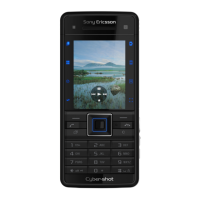
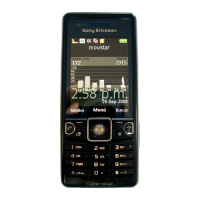

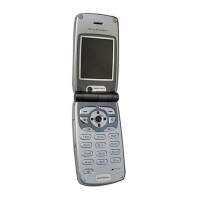

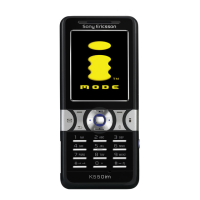


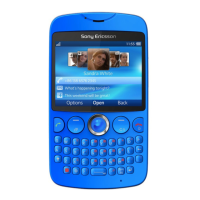

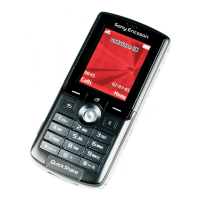

